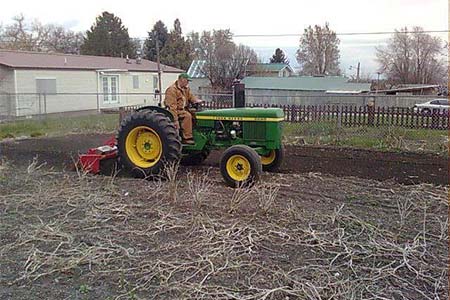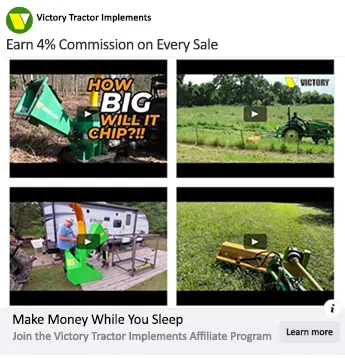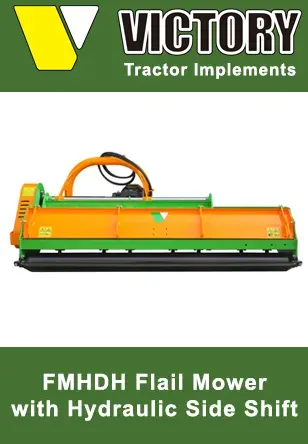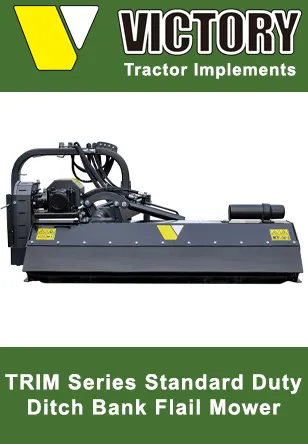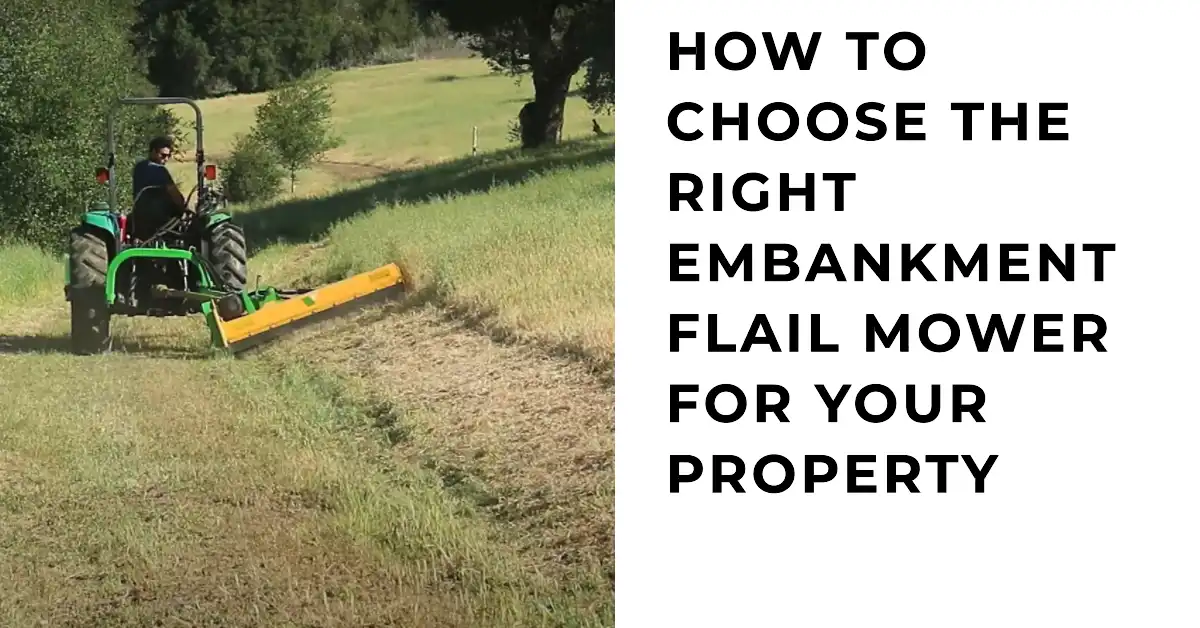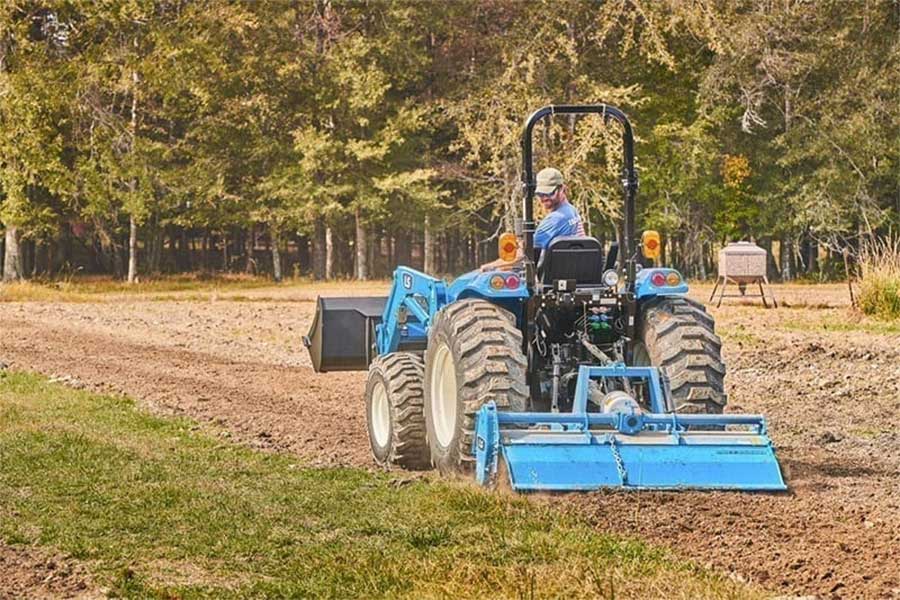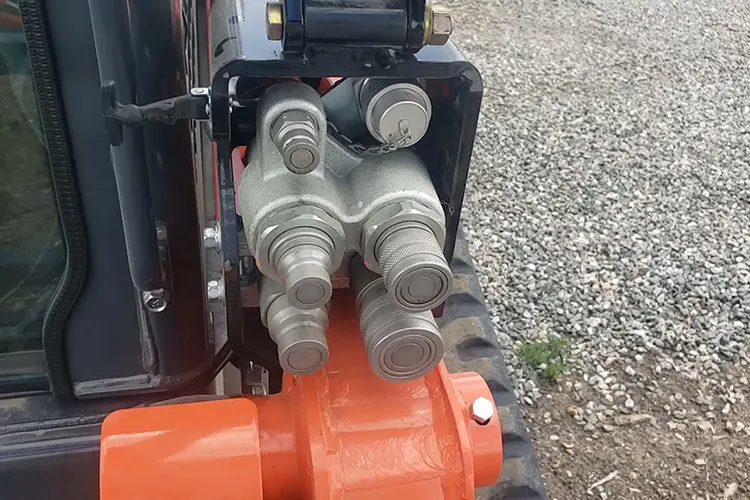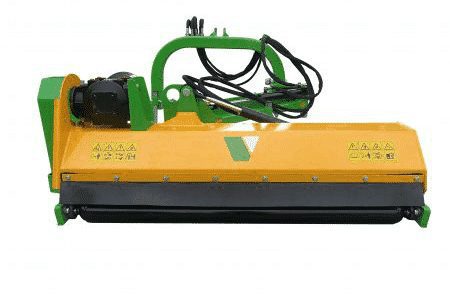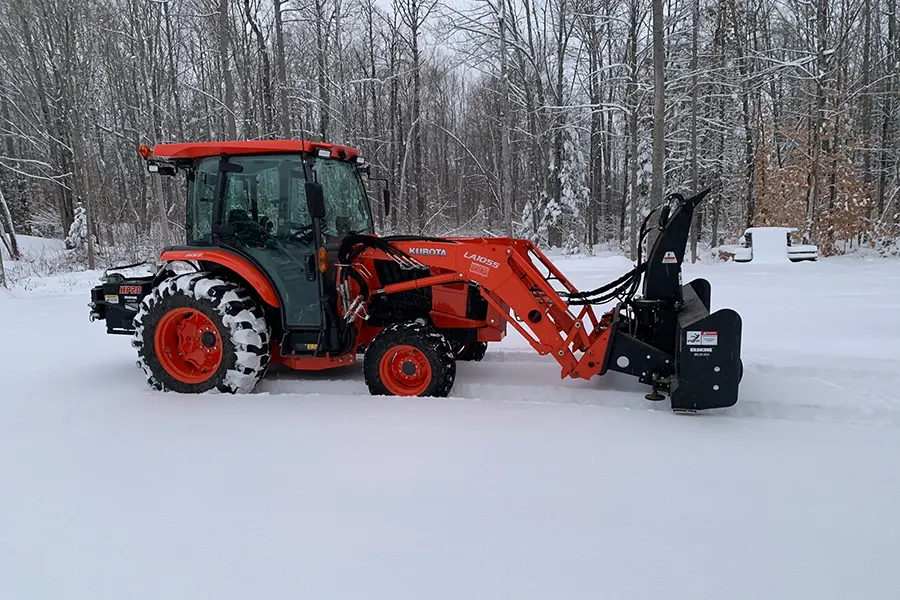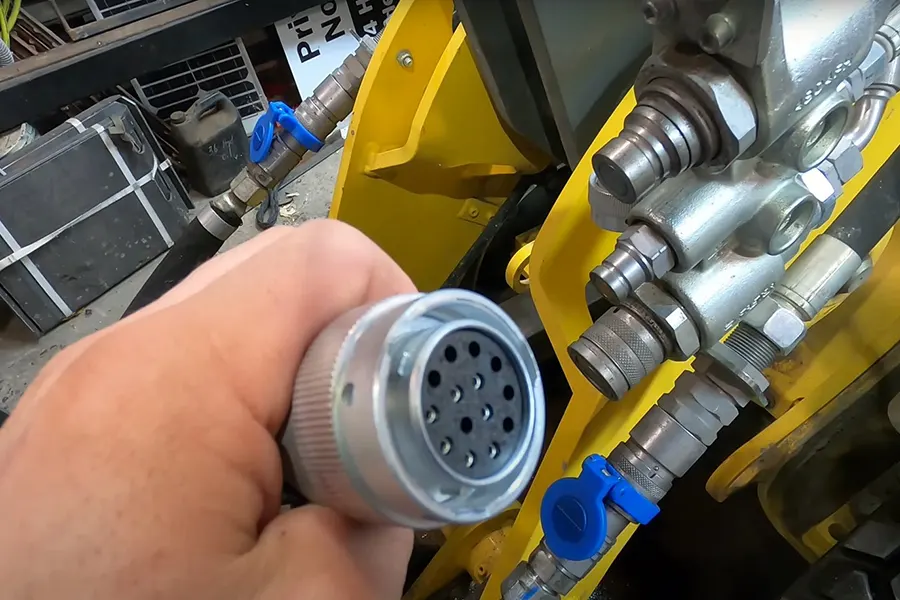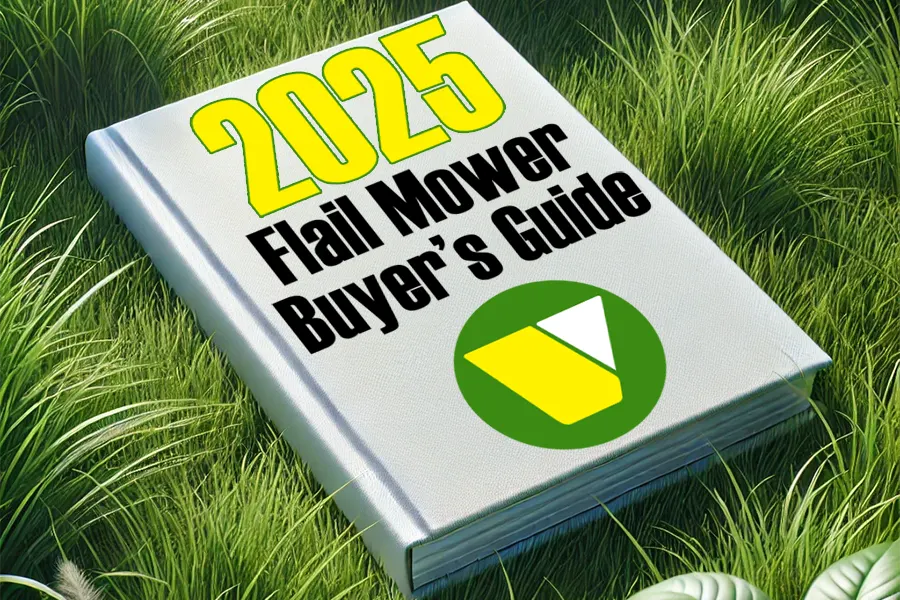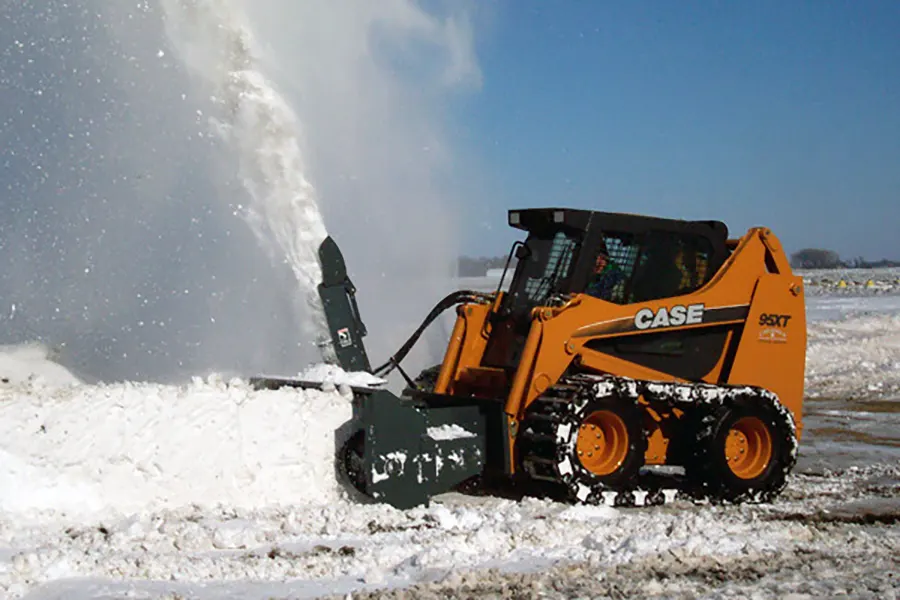Using a PTO rotary tiller is a great way to get your garden primed to look beautiful in the summer months. Rotary tillers cultivate the soil for flower beds, allotments, vegetable gardens, or lawns to look immaculate and in perfect condition, ready to sow flowers, plants, and vegetables.
They are also ideal for cultivating areas of land that children will play on to make the ground bouncy and soft. Heavy manual jobs such as trenching can also be easier with some preparation work using a rotary tiller.
This article will introduce you to rotary tillers and how you can benefit from them.
What is a PTO rotary tiller?
A PTO rotary tiller is a cultivator machine that can be attached to a tractor. PTO is an abbreviation for ‘Power Take-Off’; in other words, it draws its power from the main tractor unit, which transfers the power to attached implements.
The tiller works by rotating a series of curved metal rods that attach to a central rotating shaft. This provides an efficient mechanized way of digging and churning garden soil. This reduces clods in garden soil by churning them and making for a finely textured bed of earth. Optimal soil conditions are then created to plant plants, vegetables, and flowers to create beautiful lawns, vegetable gardens, or flower beds.
Rotary tillers are available in a range of sizes to suit different outdoor spaces and budgets. Larger tillers provide a deeper soil churn, whereas more lightweight tillers are for lighter work and stay closer to the surface.
The benefits of using a rotary tiller
Using a rotary tiller can make life much easier for all gardeners and homeowners. Whether you are an enthusiastic amateur or a borderline professional gardener, creating optimal soil conditions for your garden is essential to succeed with your planting.
Rotary tillers are handy for developing previously unused sections of a garden or larger plot of land. They can also be put to good use by property developers looking to turn previously rough land surfaces into maintained landscaped gardens. For tough terrain that used to be farm fields, yards, or older unmaintained property, a rotary tiller is an efficient way of cultivating land to be fit for its new use.
The main benefit of a rotary tiller is to turn hard or clotted earth into softer textured soil ready for planting new seeds or established plants. A rotary tiller is a mechanical form of plow or hoe. It makes a tough and time-consuming manual job into a quick and easy tractor-driven task.
Another advantage of rotary tillers is that they can cultivate completely open spaces or work around existing crops and plants to recultivate the soil around them.
How to choose a PTO rotary tiller
Having decided a rotary tiller is a good choice for you, the next step is to decide which model and type will be the best for your requirements.
The first question to consider is what you will use your rotary tiller for. Some models can be fitted out with other accessories to carry out other work than tilling and plowing. For example, some rotary tiller models can be fitted with brushes, mowers, shredders, or grinders to allow them to carry out multifunction work in a garden or farm.
It should be noted that these attachments are also available as separate machines, so if you require specialist or heavy use of those, then it may be more advisable to buy them as separate standalone equipment.
The choice of PTO rotary tiller you make will depend on the space you are working with and what you are looking to achieve with your land once cultivated – and, of course, your budget.
You need to take into account the dimensions of your tiller and the size of the tractor that will be required to pull it. Consider whether the space you have for the tiller to operate in is practical for the amount of land you have available. It must be possible for the tractor to safely pull the rotary tiller without destroying your other crops and plants. You should also factor in the space for the tractor to turn as it carries out the work and whether there is sufficient space for this around the area, you are looking to cultivate.
As with all large purchases, consider your budget and the specification and quality you are looking for from your rotary tiller. Take into account how often you will be needing to use it, how tough the terrain is that it will be working on, and the longevity you expect from your machine. The expected lifespan and warranty on your tiller will depend on some of these factors. Making these considerations will help you make the best choice when planning your purchase.
5 DIY projects for PTO rotary tillers
PTO rotary tillers are versatile machines that can help you with several different DIY projects to help make your land or garden beautiful.
Here are five ways that your tiller will be of most value to you:
Prepping the garden
Getting your garden ready to look great is one of the best uses of your new PTO rotary tiller. Tillers can be used in spring for working up and getting your garden ready for planting new season seeds and bulbs (otherwise known as primary tillage).
Rotary tillers can also be used throughout the year to spread soil clods and get the soil ready for planting other vegetation (known as secondary tillage). If your space is sufficiently large enough, rotary tillers can also carry out further cultivation while existing crops are already growing alongside.
Rotary tillers can be so efficient that in the right conditions, as little as one pass can be enough for effective primary tillage and secondary tillage. If the soil is particularly tough or planning to plant particularly delicate crops that require fine soil, a few more passes may be required. Depending on the thickness of any other vegetation in the area, a separate pass may be required to clear this before the main pass to cultivate and aerate the soil ready for your seeds.
A pass can be made in dense soil or thick vegetation and left for rainfall or watering to add moisture throughout the earth before another pass is made. This serves to break down the vegetation in the area and ensures optimal growing conditions of the soil before you sow.
Cultivating the garden
Cultivating the earth before planting breaks down vegetation and makes for optimal soil conditions for planting.
You can deploy your rotary tiller for carrying out cultivation work around existing crops. This work can be done at a slightly higher speed for primary tillage because the soil has already been cultivated to some extent for those plants.
Rotary tillers can be set to plow at different depths depending on what type of work you are doing. For cultivating the garden, the tiller can be set to a shallow level to prevent any damage being caused to your existing plants and crops.
It is important to avoid walking on newly cultivated land as the weight of your footprint can flatten and compact the soil. This provides optimal conditions for undesirable weeds to grow. These can not only be unsightly, but they also take up valuable soil nutrients from the crops and plants you really want to be growing in the best conditions possible.
Cultivating your garden or allotment with a rotary tiller will produce aerated soil ripe for a fresh planting of bulbs and seeds. It is also perfect for lawn areas to cultivate the parts where new turf is to be laid.
Growing and incorporating organic matter
Rotary tillers can make a big difference to the vibrancy of your garden, lawn, or allotment. They help provide the conditions for growing crops, flowers, plants, and grass.
In many climates, it can be difficult to increase organic matter levels in your soil organically. Organic matter helps plants to grow more quickly and healthily.
Regular soil cultivation with a rotary tiller is a great way of maintaining organic matter in your soil. This is achieved by using your rotary tiller to prepare the soil for adding additional vegetation and composting. Doing so improves the conditions for planting new crops by improving soil nutrient levels, structure, and tilth.
Planting cover crops is also possible with your rotary tiller. Once you have made one pass to plow the soil and the seeds have been laid, it is possible to make another pass with the rotary tiller to cover the seeds. This is an ideal solution for covering plants and vegetables that have larger seeds. For smaller seeds, manual covering by dragging or raking the earth is advised because the tiller may risk burying the smaller seeds too deeply to grow properly.
Middlebusting
A middle buster is an accessory that can be added to the rear of a rotary tiller. Doing so creates the ability to create a furrow in your soil. This creates a raised bed which can then be used to plant crops that benefit from a more elevated patch.
Carrying out this work is ideal preparation for preparing for new vegetables and can create optimal conditions for certain seeds and bulbs to flourish. Growing vegetables such as potatoes or sweet corn are prime examples of where a middle buster comes in useful when attached to a rotary tiller.
Conditions for these crops can be optimized by creating raised beds. This is achieved by running the ‘furrower’ as the middle buster is sometimes known, alongside the raised bed to cover the seeds with an additional layer of soil that protects and nourishes them.
Trenching
In addition to preparing the soil for planting crops, flowers, and turf, rotary tillers also provide several other practical purposes around your garden and land.
Trenching, or digging ditches, is one of those practical uses. If you are preparing a section of land to drain other parts of your patch, rotary tillers are an ideal piece of machinery to dig trenches. The tiller can run across the ditch line to free up and loosen the soil before any manual digging. Once the tiller has done its work, the manual shoveling can be carried out much more easily to dig out the remaining soil from the ditch.
For deeper ditches, using a tiller is an almost essential step to avoid the job taking too long or even impossible when the soil is too dry or compacted to be broken without machinery. Digging manually from the outset is an onerous task that is made a lot easier by using a rotary tiller beforehand.
Trenching is another example where rotary tillers can simplify managing a garden, large allotment, or vegetable plot. Loosening the soil with a rotary tiller before you sow leaves you free to focus on the more enjoyable and productive parts of managing your space.
Conclusion
This article has aimed to inform you about what a PTO rotary tiller is and its advantages for managing a garden, allotment, or vegetable plot.
The use cases that have been used to highlight the practical functions a rotary tiller can be utilized for are numerous. From preparing larger soil areas for planting new turf for a lawn through to readying a new vegetable plot for a crop of potatoes or sweet corn requiring raised beds, rotary tillers are a great addition to managing land and gardens.
Rotary tillers can also be deployed to prepare the soil for childrens’ play areas or installing swings or slides. They can also be useful to prepare an area for digging out things such as swimming pools or sandpits.
Even when a tiller cannot carry out the full function of a job on its own, it can make life a lot easier by preparing the ground for manual work to follow. A good example of this is for digging ditches; when the tiller breaks up the hard top layer of soil, ready for manual shoveling.

Victory Tractor Implements is proud to offer a wide range of products including flail mowers, wood chippers, rotary tillers, and backhoes, all designed to be connected directly to your tractor’s PTO for maximum efficiency and performance. In addition, we also offer winter equipment such as snow plows and snow blowers, designed for use with skid steers.
We source all of our equipment directly from the manufacturer and pass the savings on to our customers. As always, the team is standing by to answer any questions to assist with your decision. Victory support can be reached directly at (562) 534-8182 or sales@etractorimplements.com

